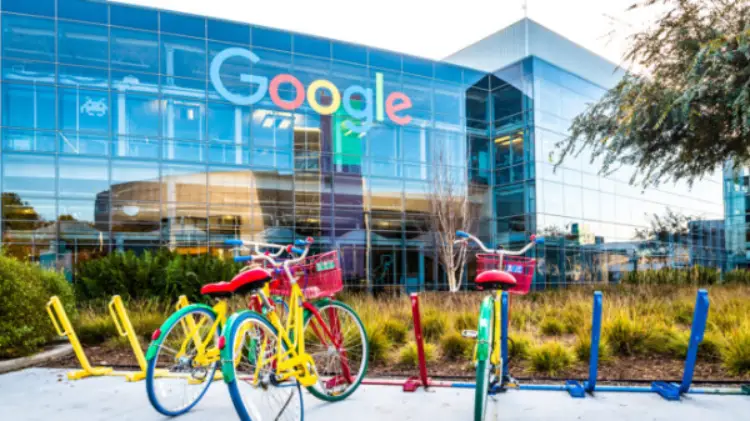
The pandemic has triggered an exodus of both tech workers and companies from the San Francisco Bay Area, home of Silicon Valley. But is this just a temporary change, or does it pose a lasting threat to its status as the epicentre of the technology universe?

Before the pandemic, the Bay Area was already experiencing a net outflow of residents, according to data from moving company moveBuddha, meaning more people were moving out than in. But in 2020, the net outflow almost quadrupled to 34%. And since September 2020, it has averaged 49.8%, moveBuddha says, meaning that for every person moving to the Bay Area, two have left.
The pandemic has accelerated what was already an emerging trend in the area: exorbitantly high rents, combined with the increased possibilities for remote work, leading many tech workers to seek more space in more affordable areas.
A survey of more than 1,300 people, conducted by our sister site City Monitor, found that in the US, technology and media workers are the most likely to have moved to a different city in the past year, with 16% having already moved, and 37% hoping to do so in the coming 12 months. Among the most common reasons for moving were improving their home environment and a lower cost of living.
Matthew Strassberg, recruiting director at a high-tech recruitment agency Skyrocket Ventures, says they have seen a huge increase in candidates moving away from the Bay Area. “In some cases, it’s temporary, in other cases it’s permanent,” he says. “We’ve definitely seen a huge increase in that, and we’ve also seen a lot of people leave the country. Some of them would like to come back and others don’t plan to come back ever.”
Steve Cadigan is a Silicon Valley-based talent consultant and was the first head of HR at LinkedIn. He says the Bay Area has always been a tough place for young workers to adapt to. “There’s a funny measurement in the San Francisco Bay Area, and that is how long the new arrivals stay,” he says. “You come out for all these riches, but I’m paying more for housing and transportation, my net earnings isn’t what I’d hoped it would be.”
Why are people leaving San Francisco?
The exodus from the Bay Area may also have been accelerated by a wave of redundancies in the technology sector. Data from Layoffs.fyi, who have collated all the lay-offs in tech and start-ups since March 2020, shows that the Bay Area has been by far the most affected, with almost twice the number of people laid off than in the whole of India. Notable examples include filesharing platform Dropbox, which laid off more than 300 employees last month, saying its “Virtual First policy means we require fewer resources to support our in-office environment”.
Other tech companies are committing to remote work for the long term. In May, Twitter was one of the first major tech companies to announce they will allow remote work indefinitely, and many others, including Microsoft and Facebook, have followed suit since.
As a result, the tech industry’s workforce is no longer confined to the Bay Area. “One client company of ours, a robotics company in Boulder, we placed about seven engineers there in a few months and half of them were actually from the Bay Area,” Strassberg says. “One candidate was a former Google engineer and so he was making $300,000 a year at Google. And he happily took about $140,000 to go work at this Colorado company.”
This also means that highly skilled tech workers, who would ordinarily gravitate towards the tech giants, are being courted by a wider field of potential employers. This has, if anything, intensified competition for the top talent, says Strassberg.
“Previously, anyone who wanted to hire a Bay Area engineer, most likely you would have to have an office in the area,” he says. “But now with remote work being the norm… these great Bay Area engineers are actually being targeted and recruited by companies all over the nation, and even all over the world. So the Bay Area companies are facing much more competition than they ever had before.”
Tech relocates to Texas
As well as going remote, many tech companies are relocating. The most popular destination seems to be Austin, Texas. Oracle and HPE both announced major moves to the city, while Apple, Google and Facebook are all in the process of expanding their foothold there. In May, Elon Musk dramatically announced on Twitter that he would be moving the Tesla HQ there too. Indeed, Austin is the most popular destination among Bay Area residents relocating with moveBuddha, the company’s data reveals.
In an op-ed for the Wall Street Journal, explaining his decision to relocate to Texas, venture capitalist Joe Lonsdale wrote that the Bay Area no longer has the monopoly on tech talent it once had. “In 2000 or 2010, it made sense to build in San Francisco. That’s where all the talent was, but not anymore,” he wrote. “Except for a few concentrated parts of advanced biotech and software infrastructure technology, talented people are building top technology firms all over the country.”
Other cities seeking to court the tech companies fleeing the Bay Area including Miami, Florida. The city’s mayor Francis Suarez recently tweeted an offer of support to a VC who suggested moving the tech industry there.
These moves, combined with the pandemic, have deflated demand in San Francisco’s notoriously oversubscribed property market. Restate company Cushman & Wakefield found that the office vacancy rate in San Francisco increased by more than 10% in 2020. At the end of the year, the citywide vacancy rate was 16.7%, the highest it’s been since the dot-com bubble burst. Twitter, Airbnb and Dropbox are all reported to be looking to sublet their office space in the Bay Area.
Don’t write Silicon Valley off yet…
Could these moves spell the end of Silicon Valley’s decades-long reign as the epicentre of the global technology ecosystem? That dominance has derived in large part from its ability to attract the best minds in tech. Without that talent, the Bay Area is just another neighbourhood.
It’s too soon to write-off Silicon Valley just yet, says Cadigan. For many, the pandemic has revealed the importance of face-to-face collaboration to creative and engaging work.
“Being able to learn and adjust and adapt and course-correct quickly is so important in technology,” he said. “That isn’t easily done from afar, and I don’t know that anyone’s a master at that. We have very few proven success stories of value being created in 100% distance reality.”
The need to create a strong company culture, that keeps employees loyal and engaged, may also prompt tech firms to limit remote working. “Are people going to feel less loyal, because there’s nothing tangible to connect them to their company?” he asks. “I have access to people in different places – but am I going to trust them as much? Am I going to be able to collaborate and work on really complex problems well together?”
He adds that the mental health and childcare challenges that many have encountered during lockdowns mean that many employees are keen to return to offices.
Strassberg says that many Skyrocket Ventures clients have struggled with employees based in multiple timezones (Texas, for example, is two hours ahead of California). And he has seen a huge increase in the number of candidates quitting or being fired from a company soon after beginning a role in the past year, which he attributes to the shortcomings of remote recruitment.
“The rate [of fallouts] has perhaps doubled, perhaps maybe even more than that,” he says. “It’s more difficult than ever for companies to interview and evaluate candidates, and for candidates to evaluate companies.”
The biggest tech companies are already geographically distributed: only 3% of HPE’s employees are based in the Bay Area, for example. For Oracle, it is less than 6%. That distribution has not knocked Silicon Valley’s dominance yet, so it may well survive a little more.
Perhaps more important to Silicon Valley’s future is its start-up ecosystem. Even before the pandemic, the dogma that every tech start-up needs to be based in the Bay Area was being questioned: high property prices and the ability to work remotely meant an office in the Bay Area is not necessarily the best use of a start-ups hard-won investment.
Crucially, however, Silicon Valley is still where the money is, says Cadigan. “None of the other regions of the world have the deep-pocketed investors like Silicon Valley has,” he says. “Are there going to be more companies that start outside of Silicon Valley? Yes, but they’re still going to have to come to Silicon Valley to get money.”
Cadigan says investment is a key part of the network of Silicon Valley, and what makes it so hard to replicate. The culture born in the ’90s, which sees high turnover between tech companies, creates a huge network of ideas and opportunity that ultimately fuels innovation.
“It’s not about having smart people, it’s not about having start-ups, it’s about the whole ecosystem.”






